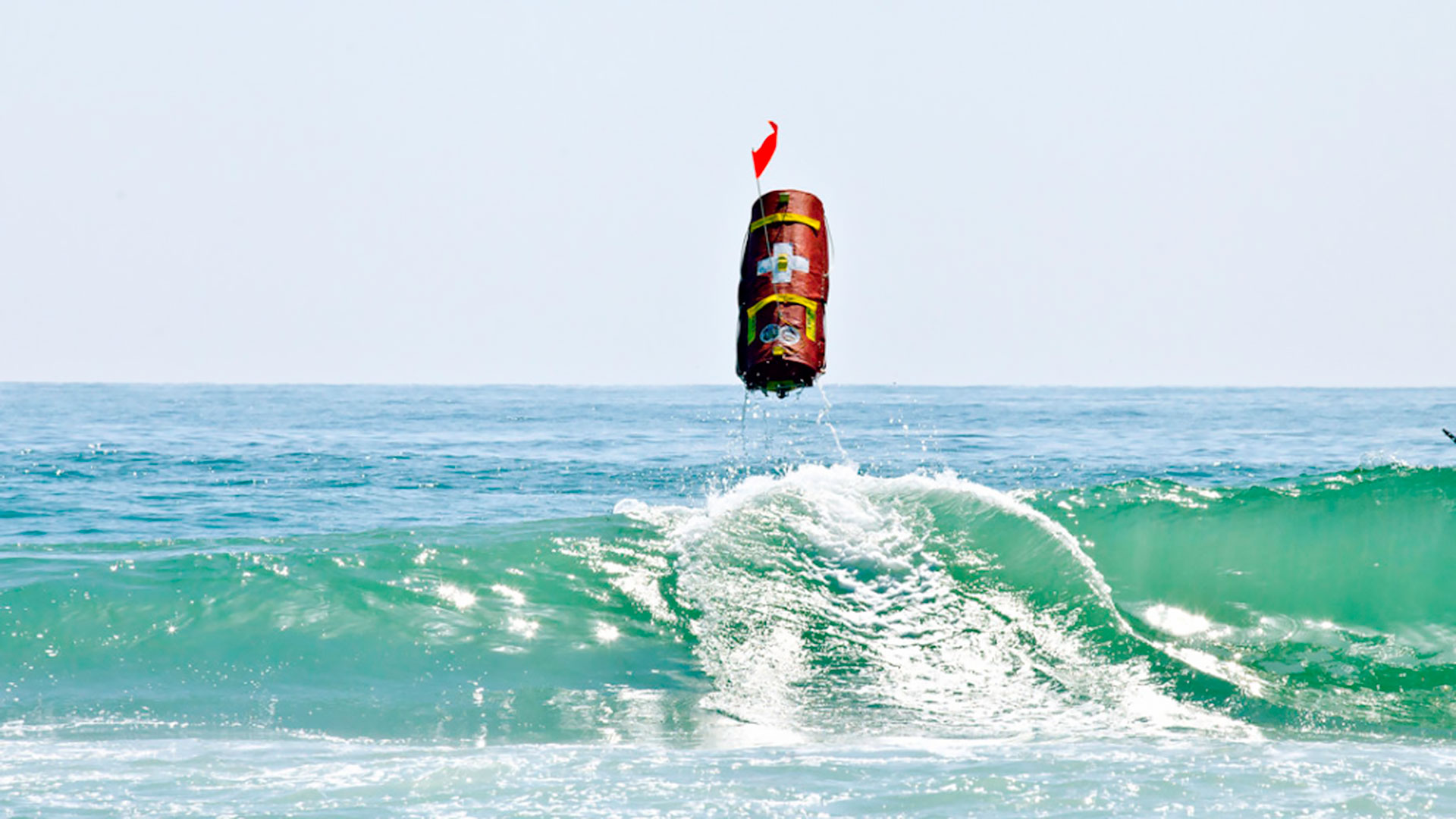

Dr. Robin R. Murphy at Texas A&M is a pioneer in robotic rescue science. On a recent blog post she argued that it’s unethical NOT to use human-less rescue equipment to save lives. And right now A&M’s Center for Robot-Assisted Search and Rescue is taking steps to begin doing just that in Greece, to save desperate, fleeing Syrian refugees from drowning when their worthless boats begin to capsize near-shore. As recently as January 5th, 34 people drowned, seven of them kids.
But the trouble with conventional rescue is that it puts a lifeguard at risk of drowning, and even a trained professional can only rescue one person at a time.
Robotic life rafts can dramatically change the equation.
Enter EMILY (EMergency Integrated Lifesaving LanYard), a four-foot-long red torpedo. In this test project in Greece an EMILY unit is sent either from shore or from a rescue craft and trails a 2,000-foot tether so it can be retrieved via a powered reel. That way it saves juice for the journey to rescue people in the water, and can be sent with maximum power at 20mph through a battery powered, inboard jet pump (no external prop to hurt people or snag detritus in the water). Battery life is only 20 minutes, but even if it’s deployed at maximum range and speed, an EMILY unit could be sent out 20 times before running dry.

The key thinking here, according to a blog post by Murphy, is that if you use robotics to help people who are conscious and able bodied when a boat capsizes, expert rescuers can help children and the elderly who may not have the strength to hang on to this kind of robotic buoy.
And that speed, and maximizing it, is why she argues that robots (and yes, that means UAVs, or what we commonly call “drones”) are superior life-saving devices to conventional, human approaches. She explains that from the 2014 Oso Mudslides in Washington State, to the 2011 Fukushima disaster in Japan, unmanned marine vehicles and quad copters have sped rescue operations and prevented further risks to would-be human rescuers. Just like the EMILY approach, the idea is putting fewer people in danger. Who cares if a drone takes a hit?

And to that end, she says that robots can prevent not just the risks to rescuers, but to our falling down Interstate corridor. She says they should be deployed to save money and lives. “Remember the I-35 bridge collapse in Minnesota? Minnesota apparently is one of the top states in keeping up with bridge inspections, but only 85 percent of their bridges are compliant with Federal standards on inspection. That doesn’t bode well for them—or the rest of us. We need unmanned systems that can work cost-effectively, 24/7 and in places inspectors can’t go, or can’t go quickly or safely enough.”
Amen to that. Because nobody wants higher taxes—but everyone wants bridges that stay up.
Speaking of which, the project in Greece is self funded, so if you think this is cool and want to help Dr. Murphy’s project save lives, give them a buck or 20 here.